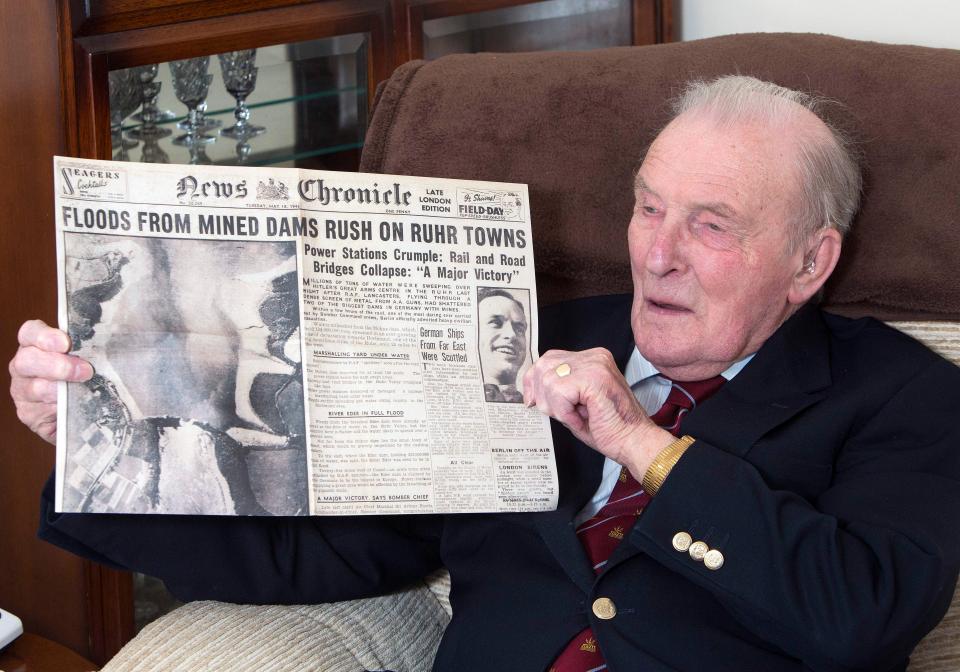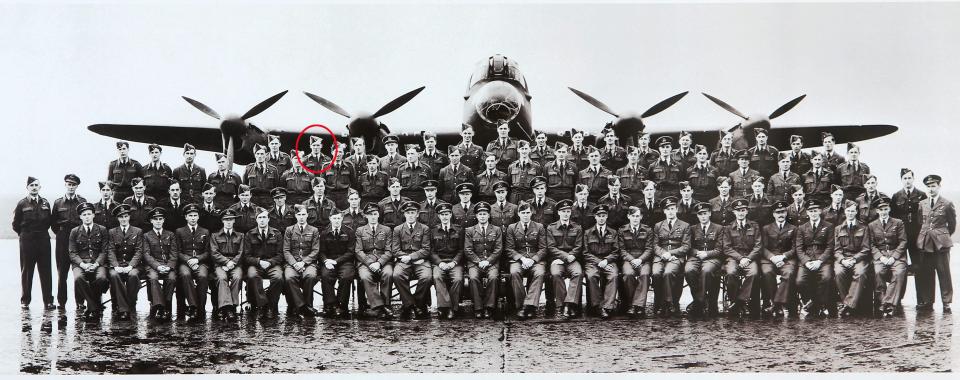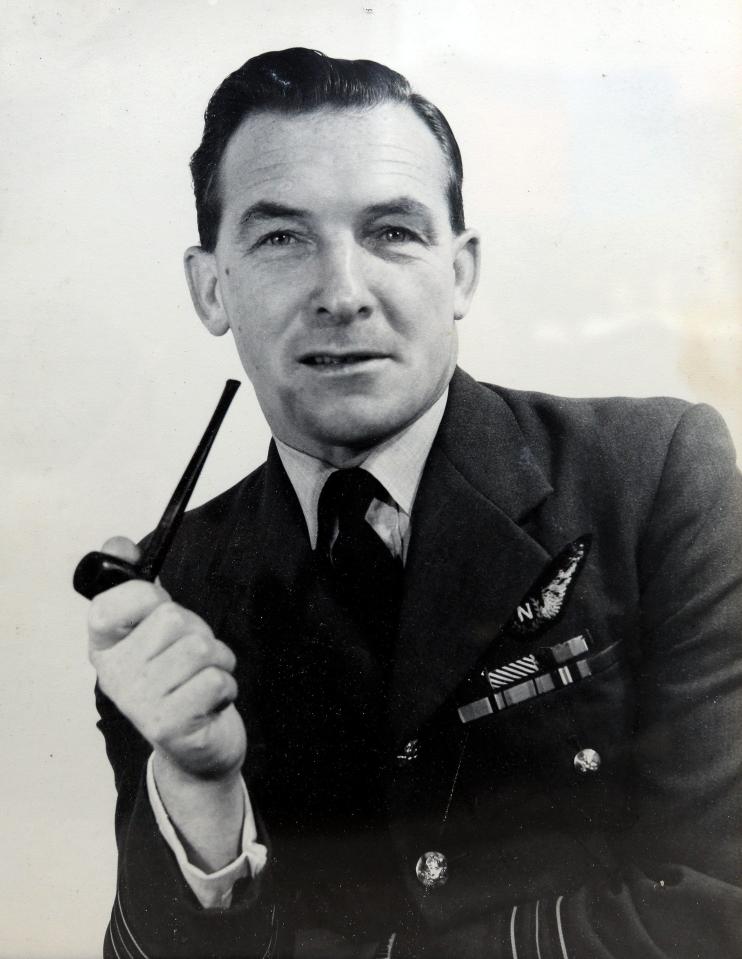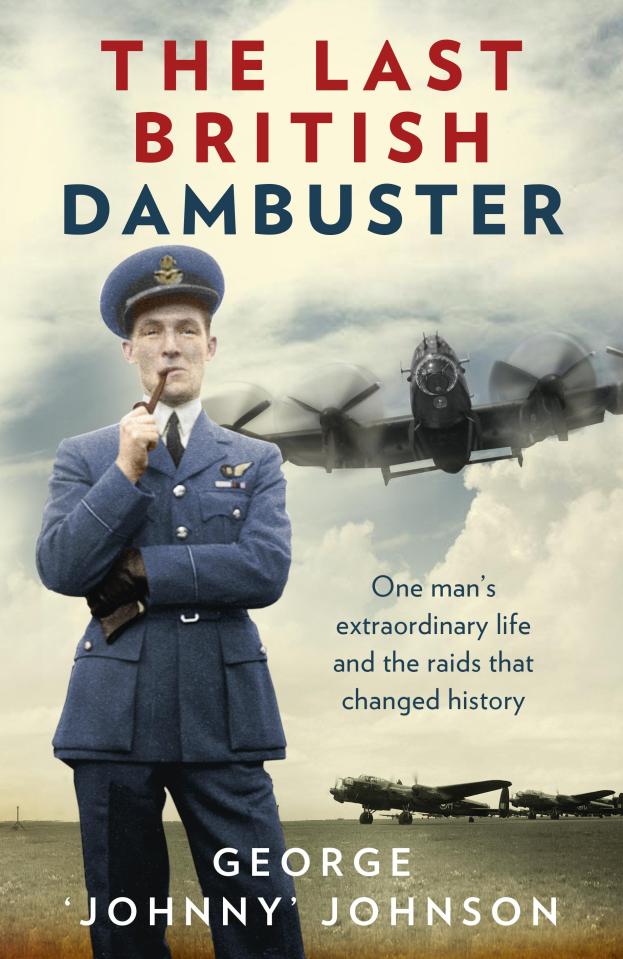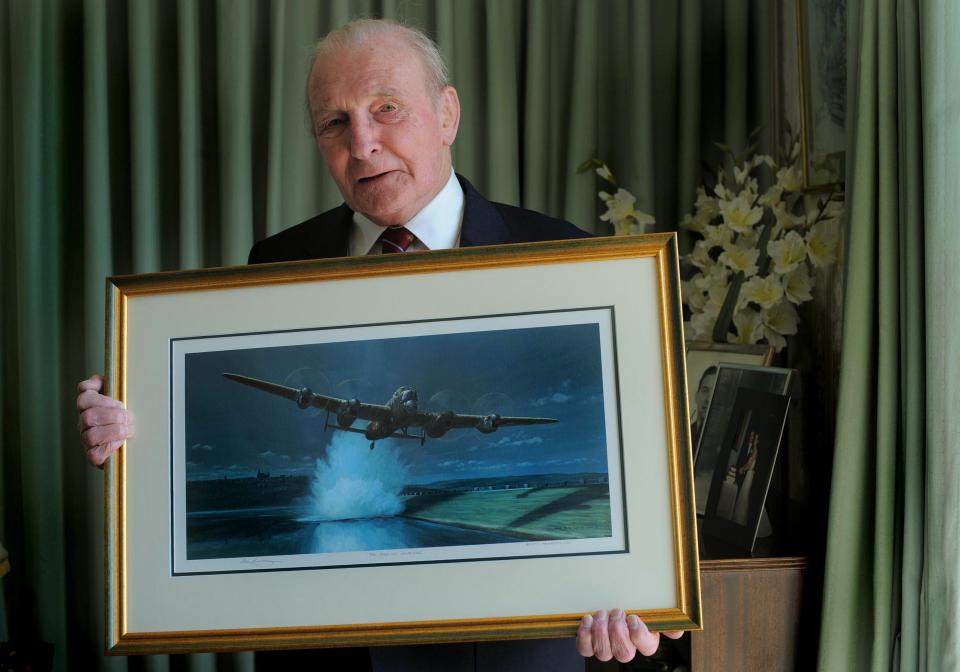Who is George “Johnny” Johnson? Last surviving Brit from Dambusters RAF squadron – here’s what we know

DAMBUSTERS hero George "Johnny" Johnson has been snubbed in the New Year's Honours list despite taking part in one of the most daring raids of the Second World War.
The 95-year-old veteran is the last surviving Brit from the famous 1943 "bouncing bomb" raid which shattered dams in Germany.
The Sun's campaign for Johnson to receive a knighthood received more than 200,000 names and was delivered to 10 Downing Street by TV star Carol Vorderman.
Who is George Johnson and what did he do in the war?
Johnny, from Bristol, was just 21 when the RAF’s 617 Squadron carried out the daring Operation Chastise in May 1943.
The "bomb aimer", who married wife Gwyn a month before, was on one of the Lancasters which attacked the strategic targets in the Ruhr valley.
A specially-developed bouncing bomb was designed by engineer Sir Barnes Wallis to skip across the water and avoid defensive torpedo nets.
He retired as an RAF squadron leader in 1962 and went on to become a teacher and local councillor.
Over the years he has been a tireless fundraiser and gave huge sums to forces’ charities.
He told The Sun: “The highlight of my wartime career has to be that raid. It’s something I’ll always remember — not only the action but also the sight of the dam as we came home.
“We knew it had been breached from radio broadcasts but we could also see water everywhere, like an inland sea. The satisfaction of that was enough for me.
“I’m not sure about an honour — I just consider myself lucky to be alive.
“We lost so many in the war, but I’ve been able to see my children have children and their children have children, and I’m still here.
“Family is my life now and that means so much to me.”
The Sun's petition for Johnson to receive a knighthood was delivered to Number 10 by TV star Carol Vorderman on January 26, 2017.
How important was the Dambusters' raid?
The raid was audacious and extremely dangerous.
It was put together in just 56 days, with 133 men having to fly 19 enormous Lancaster bombers just 60ft off the ground in the dark.
It required incredible skill and bravery, and almost half the men who went on the mission were killed.
The huge loss of life meant its success was downplayed in the years after the war - despite it becoming the subject of a box office blockbuster.
But historians in recent years have uncovered just how crucial a blow the raid played in the allies' efforts to crush Hitler.
The courageous attack had a catastrophic effect on the Nazi war effort, devastating Germany's ability to produce vital steel and costing billions to repair at a crucial point in the conflict.
Four power stations and 12 war production factories were destroyed, while about 100 other factories were damaged, railway bridges were incapacitated, road bridges knocked down and 3,000 acres of farmland destroyed.
Coal production was slashed by 20,000 tonnes and steel production by about 180,000 tonnes in the month that followed.
It also redirected 7,000 workers who would otherwise have been building a wall along the Atlantic coast which would have prevented the D-Day landings and changed the entire course of the war and the allies' subsequent victory over Germany.
What dams did the Dambusters attack?
Operation Chastise was carried out on the night of May 16 1943.
Scientist Barnes Wallis invented and developed his "bouncing bomb" after seeing the need for strategic attacks which would paralyse the enemy's ability to wage war.
Early in 1942, he began experimenting with marbles skipping over water tanks in his garden.
A bomb which could skip over water would avoid torpedo nets - and backspin was used to stop it exploding directly underneath the bombers.
The Möhne, Eder and Sorpe dams in Germany's industrial heartland the Ruhr valley were chosen as targets.
While the Sorpe dam was only slightly damaged, the other two were breached, causing catastrophic flooding.
Power stations, factories and mines were damaged or destroyed, and production did not return to normal until September - four months later.
Why has George Johnny Johnson been overlooked for an honour?
The honours system recognises ordinary people and celebs who have made achievements in public life or committed themselves to serving and helping Britain.
They must be nominated, which can be done by filling in a form .
The Queen is presented with a list of nominees each year for her approval, but must act on the advice of the cabinet and cannot choose to give someone an honour herself.
A campaign - led by The Sun - has been launched after Johnny was missed out of the New Year's Honours list.
Paul Walmsley, who has been campaigning for Johnny to receive an honour, received a letter from the Queen before Christmas which said: “Her Majesty is second to none in her admiration for those who put their lives at risk in the service of their country, and was deeply touched that you should wish to share your feelings with her.”
The honours system recognises civilian achievements rather than military.
Johnny was awarded the Distinguished Flying Medal for “acts of valour, courage or devotion to duty whilst flying in active operations against the enemy”.
READ MORE
After honours for Cameron's cronies, last Dambuster is snubbed again in New Year's Honours list
New Year's Honours list 2017 in full - from Andy Murray and Victoria Beckham to Mo Farah
What is the New Year's Honours list, how are people nominated and why are honours awarded?
What's the difference between an MBE, OBE, CBE and Knighthood, and which is highest?


